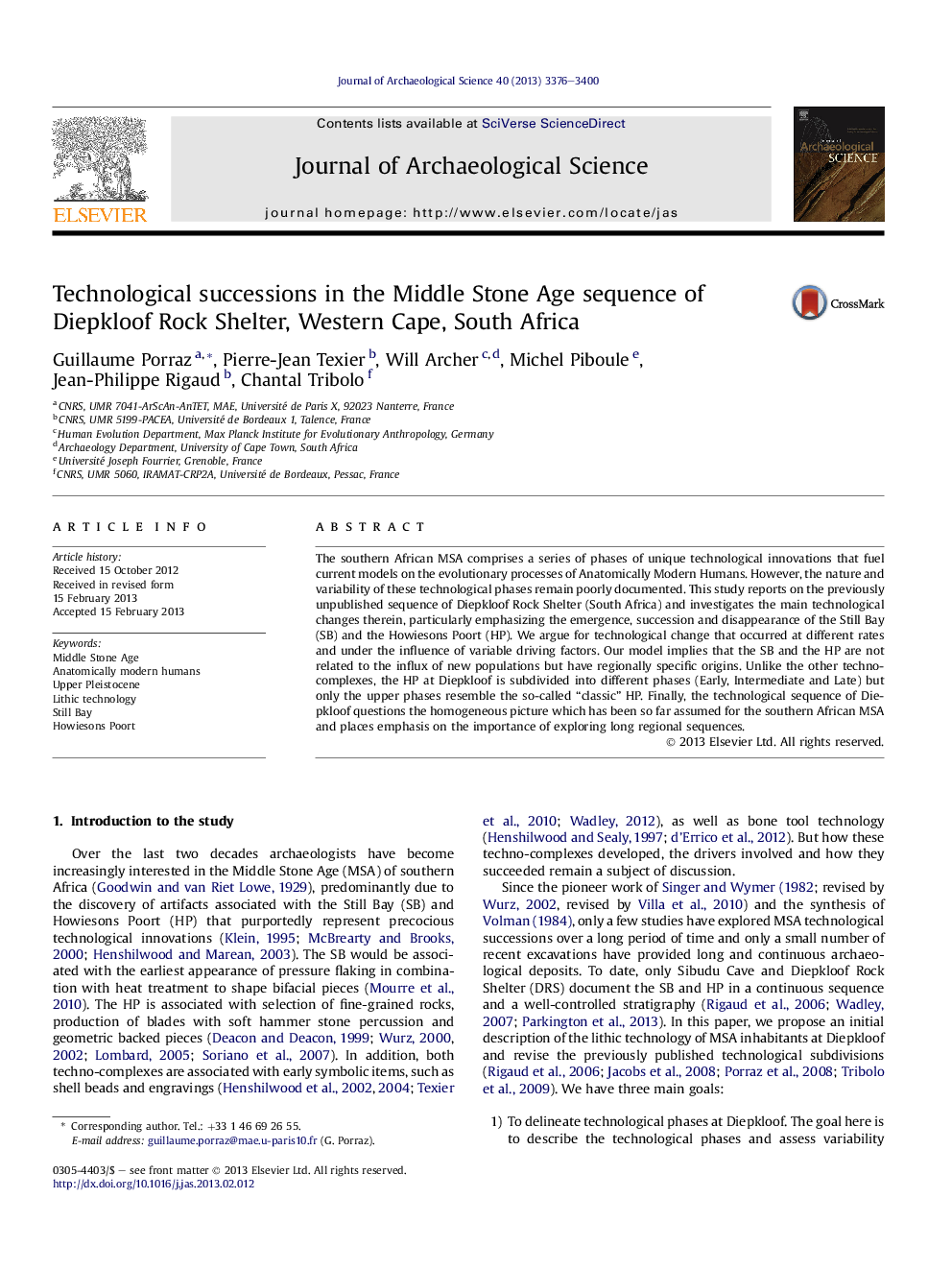| Article ID | Journal | Published Year | Pages | File Type |
|---|---|---|---|---|
| 1035424 | Journal of Archaeological Science | 2013 | 25 Pages |
The southern African MSA comprises a series of phases of unique technological innovations that fuel current models on the evolutionary processes of Anatomically Modern Humans. However, the nature and variability of these technological phases remain poorly documented. This study reports on the previously unpublished sequence of Diepkloof Rock Shelter (South Africa) and investigates the main technological changes therein, particularly emphasizing the emergence, succession and disappearance of the Still Bay (SB) and the Howiesons Poort (HP). We argue for technological change that occurred at different rates and under the influence of variable driving factors. Our model implies that the SB and the HP are not related to the influx of new populations but have regionally specific origins. Unlike the other techno-complexes, the HP at Diepkloof is subdivided into different phases (Early, Intermediate and Late) but only the upper phases resemble the so-called “classic” HP. Finally, the technological sequence of Diepkloof questions the homogeneous picture which has been so far assumed for the southern African MSA and places emphasis on the importance of exploring long regional sequences.
► Diepkloof documents distinct MSA techno-complexes, including the SB and the HP. ► Unlike other techno-complexes, the HP documents diachronic changes. ► Only the upper HP phases represent the so-called “classic” HP. ► The technological changes occurred at variable tempos and under different influences. ► The set of data suggests technological changes manifested on a local scale.
